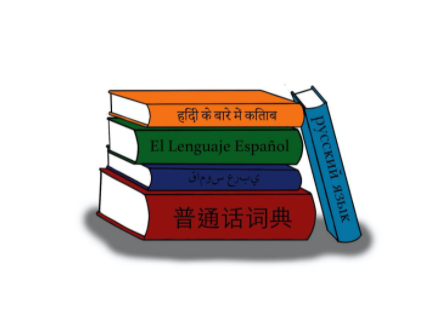More diverse options for language classes needed

The language curriculum taught to high schoolers needs to change. It is too narrow, and focuses on latin-based languages to a large extent. High schools should introduce a more varied language choice, with a broader curriculum.
March 22, 2022
Language classes are a cornerstone of the American education system. 69.21 percent of K-12 students are enrolled in Spanish, with French and German enrollment following close behind. Although French accounts for the second most studied language in the U.S., it only has around 229 million speakers and German with 130 million speakers. Languages such as Mandarin and Arabic, however, have 1.1 billion and 422 million speakers respectively.
Despite this, these languages have less than 3 percent of foreign language enrollment in the U.S. Most students in the U.S. learn European-based languages, which fails to represent the diversity of languages across the world. The language curriculum taught to high schoolers needs to change, as it is too narrow and focused on Latin-based languages. High schools should introduce a more varied language choice, with a broader curriculum.
Learning a new language can expose students to different cultures, histories and people. A test on world affairs administered by The Council on Foreign Relations resulted in an average score of 55 percent from American respondents aged 18 to 26. While taking any language class might increase students’ knowledge of world affairs, most American students know more about European history than they do for other regions in the world, because the history curriculum is centered around Western history. Introducing students to African and Asian languages would open the door to the history, religions and cultures of other parts of the world. For instance, learning Arabic creates a path for studying the religion, Islam, as the Quran is written in Arabic.
Learning languages that aren’t European-based may build connections between individuals within the U.S. According to the Organization for Economic Cooperation and Development, the U.S. is ranked second in the world for net foreign immigration. This means that hundreds of thousands of people that speak foreign languages move to the U.S. every year. If the language curriculum is mainly Spanish-based, communication between citizens and immigrants that don’t speak Spanish or English is more challenging, and can cause ethnic separation between groups.
Language barriers can also create demographic problems among non-English speaking immigrants, leading to large groups of poverty. French is the second most taught language in the U.S., but French-speaking immigrants only account for 3 percent of the total immigration population. The second largest immigration population by country is Chinese, and third is Indian. Schools should introduce Mandarin and Hindi classes as those languages would be more applicable.
Having a population that speaks a diverse set of languages makes the world less dependent on one language as a lingua franca, a common language used for global business and trade. English is often seen as the international lingua franca, with around 1.5 billion learners.
While the world learning one language may seem beneficial, it actually causes people to stop speaking their native languages. This could result in language extinction, and could also lead to homogeneity of unique cultures. As languages such as English gain popularity around the globe, essential resources diminish for other languages, as more people use the same resources in English. Learning languages that aren’t as popularly spoken would allow more resources, such as the internet, to be accessed from native speakers of more languages.
Including a wider selection of languages in high school education also opens the door to jobs all over the world. China and Japan are two of the world’s largest economies, and having access to Mandarin and Japanese classes may give students advantages if they plan to pursue jobs in those countries later on.
Learning different languages is crucial for building connections with not only people in the United States, but everywhere around the world. Teaching languages restricted to one part of the world does not show the true diversity of humans around the planet. It’s time to teach new languages, not only for the benefit of students, but for the benefit of human beings as a whole.













Lorraine Cavanagh • Mar 24, 2022 at 5:23 pm
Brilliant article and so very true.